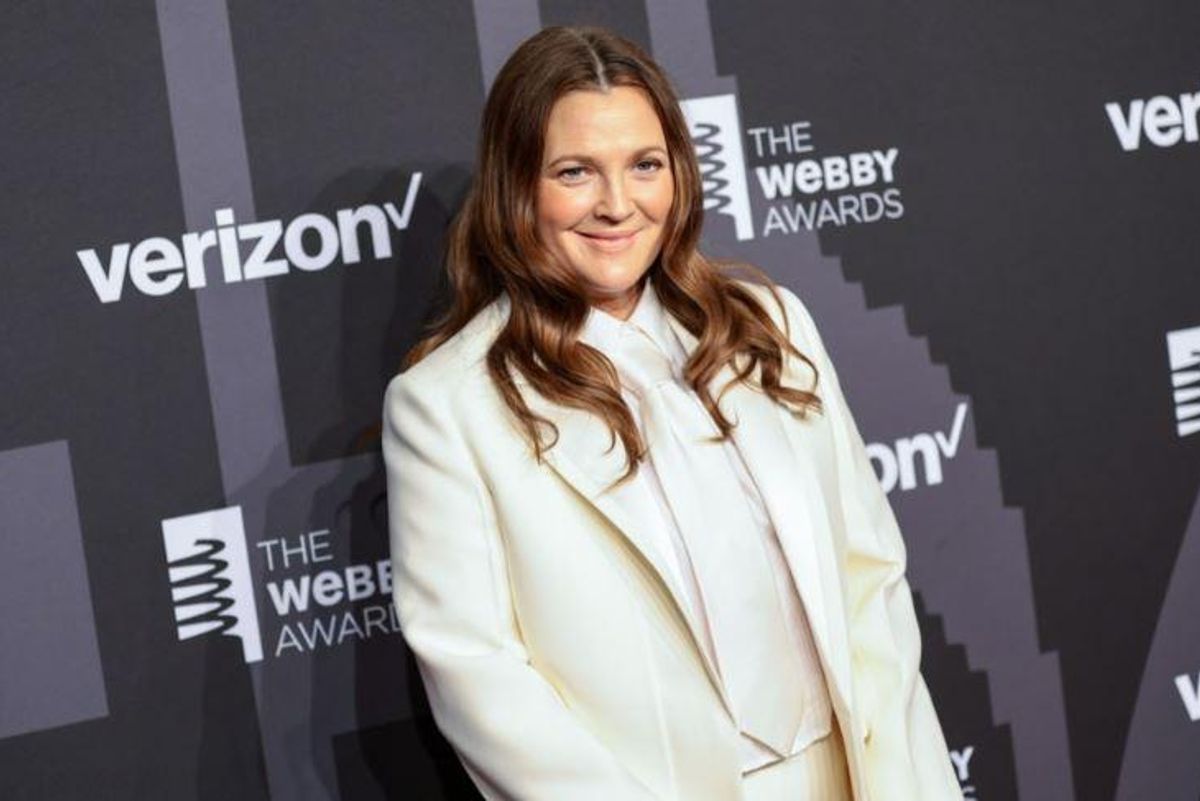After causing an unexpected stir, Drew Barrymore explains why she 'doesn't need sex'
'At nearly 48 I have very different feelings about intimacy than I did growing up.'

Drew Barrymore attends the 26th Annual Webby Awards on May 16, 2022 in New York City.
In late September, talk show host Drew Barrymore made an off-hand comment about sex that caused an unexpected stir. During a “Drew’s News” segment with Ross Mathews, the two discussed Andrew Garfield’s admission he abstained from sex for six months while filming Martin Scorsese’s 2016 film “Silence.”
“I get abstaining from sex, I mean I did that my entire 20s, right?” Mathews joked, to which Barrymore responded, “What’s wrong with me that six months doesn’t seem like a very long time? I was like, ‘Yeah so?'”
“We buried the lede there, that’s the headline. Drew can go six months, no big deal,” Mathews added. “Years,” Barrymore confirmed.
A woman in Barrymore’s yoga class mentioned her comments in passing, not knowing she was speaking to the actress. “You look just like Drew Barrymore except for you look like you have mental wellness and besides … she hates sex!” Barrymore recounted on her blog.
After the rude comment, Barrymore decided to clear things up on her blog. Her explanation was a mature way of looking at love and intimacy and the challenges faced by single mothers.
She gave some background behind her blog post in an Instagram video.
“At nearly 48 I have very different feelings about intimacy than I did growing up,” Barrymore wrote. “However, after two kids and a separation from their father that has made me cautious, I have had the pleasure of shifting my focus when it comes to love for myself and my two daughters. I know that does not include a man nor has it for a while. I’ve come to realize through working in therapy (with Barry), he said something and I had to write it down. He said, ‘Sex is not love! It is the expression of love.’”
Barrymore wants to set an example of a healthy view of intimacy for her two daughters, Olive, 10, and Frankie, 8, who she had with ex-husband Will Kopelman.
“I’m also raising two daughters, so how we raise girls to be appropriate and empowered and to love themselves and to realize that we live in an age where the images and messages that they will see will also contradict what I have come to believe intimacy is!” she wrote.
The “Wedding Singer” star divorced Kopelman a little more than seven years ago and it’s taken her time to feel comfortable again in a relationship. While she doesn’t judge those who jump right into new relationships after getting divorced, what feels right to her is what matters.
“Some people can get out of a marriage or relationship and in the near future find themselves in another relationship. There is nothing wrong with that! Not one bit,” she wrote. “I do not judge! I celebrate their journey! Because for some people that really works. It didn’t work for me.”
Barrymore’s decision to open up about her love life and share her deepest thoughts about intimacy are brave, especially in a world where celebrities are expected to flaunt their sexuality. Barrymore is strong to admit that she has scars from the loss of her marriage and that running back into a relationship isn’t right for her at this time.
There are a lot of people who are grieving the loss of a relationship and don’t feel they’re allowed to take time for themselves. Let’s hope that Barrymore’s admission gives them strength to be alone when it’s what’s best for their well-being.
This article originally appeared on 10.18.22

